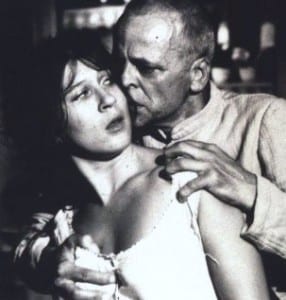The role of the Dramaturg?
What actually is a Dramaturg? The dramaturg has many different jobs or roles, the role within the company is usually dependant on the nature of the organisation. A production within an organisation involves a network of people working together.
The dramaturg is sometimes used as the productions mediator, otherwise described as the ‘go-between’ or the communicator between the members within the organisation/company. The dramaturgy will often liaise between:
- The production and the public
- Artistic director and producer
- Actor and director
…to unsure the smooth running of the production and to make sure all members of the company are on the same wave-length with regards to the final vision for the production.
“You have to be the integrator and the communicator and you have to mediate between all these parties” (Henrik Adler 2005, p.20 cited in Turner and Behrndt 2008, p.161)
As well as taking on the role as the ‘spokesperson’ of the team, the dramaturg may also have other varying roles with regards to the framing of the production. Their time may be concerned with finding ways of articulating and shaping the decision making within the rehearsal space. This job in particular may sound quite similar to the work of the director, especially when considering the rehearsal process, however when the the role of the dramaturg is viewed as a more a collaborator, the dramaturg and the director work in close collaboration anyway. It is known that occasionally some directors find this daunting and their presence viewed as threatening, but for other directors the dramaturgs input is welcome.
The dramaturg is involved with many others key areas when building a production. They contribute to the understanding of the motives and style or the production, they provide support, feedback and are also sometimes in charge of the research and facilitation of the piece. Some dramaturgs provide a great amount of input into the general decision making, development and architecture of the work. In some cases a strong element of the artistic investment is personal to the dramaturgs work.
A big question that is said to be a bit of a mystery when considering the dramaturgs work…What specifically is personally their own work? When you take the nature of their work and their role into account, in some cases its hard to pin-point exactly which ideas/input does the dramaturg actually claim. Due to this, in some cases the dramaturgs input can almost go unrecognised as it is very difficult to claim ownership upon any single element of the performance as being distinctly their own.
Anne Bogart, director of New York based SITI states
“I think with dramaturgs there is usually this really bizarre question of ownership or something, a director has ownership of staging, a actor has ownership of the acting…well, in the best case, usually in a new play the role of the dramaturg is not to have ownership. But if you look at American Silents, there is a huge amount of ownership and its called ownership of archival materials and of structural ideas. (Coleman and Wolff 1998, p. 27: ctied in Turner and Behrndt 2008, p. 164)
This statement, as one example, suggests that perhaps dramaturgs do get the recognition they deserve, but credited under a different name.
Bibliography:
- Turner, Cathy and Synne K, Behrndt (2008) dramaturgy and performance, Hampshire: Palgrave Macmillan.
Written by Amie.
